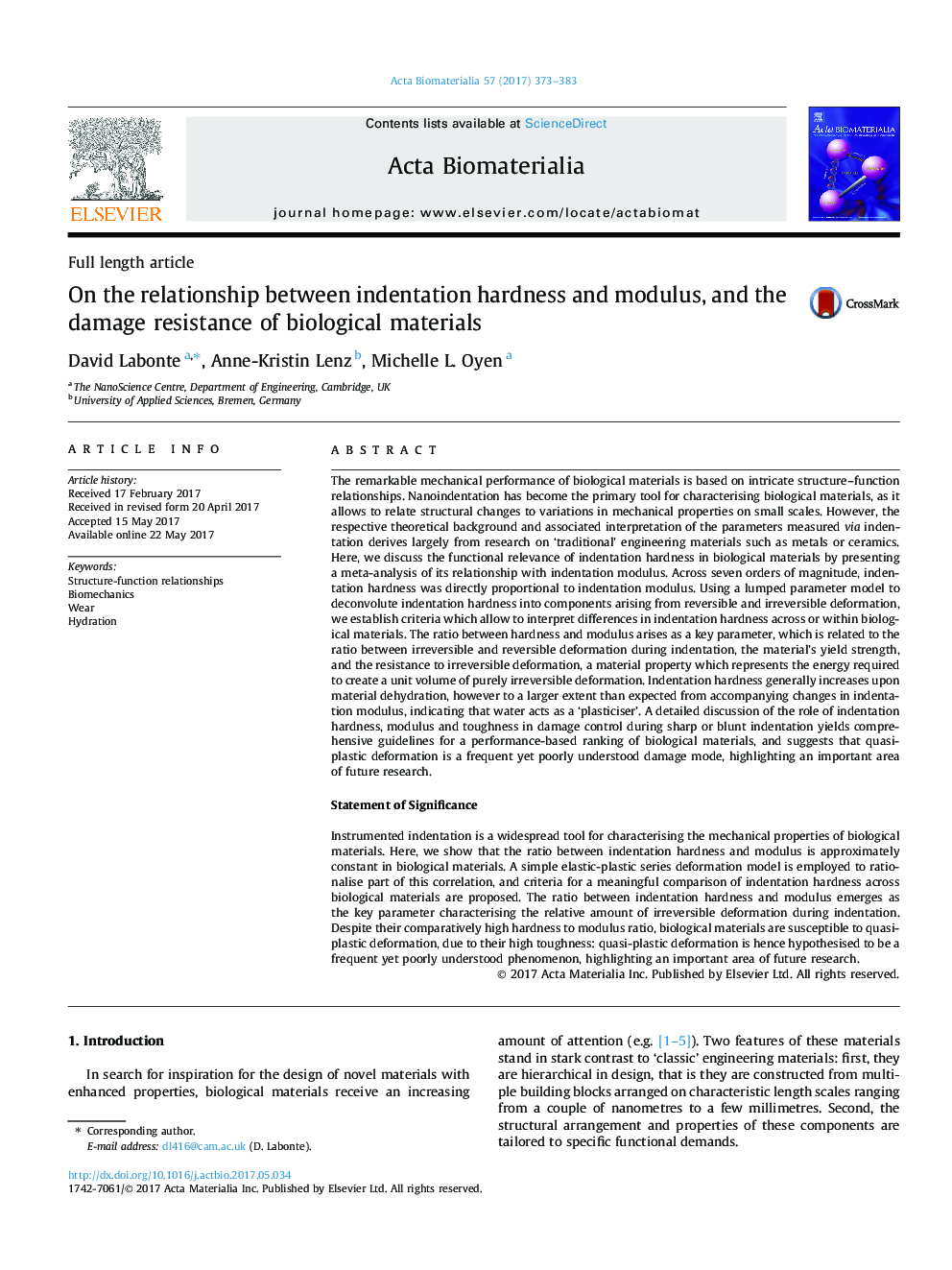| کد مقاله | کد نشریه | سال انتشار | مقاله انگلیسی | نسخه تمام متن |
|---|---|---|---|---|
| 6449151 | 1415929 | 2017 | 11 صفحه PDF | دانلود رایگان |
The remarkable mechanical performance of biological materials is based on intricate structure-function relationships. Nanoindentation has become the primary tool for characterising biological materials, as it allows to relate structural changes to variations in mechanical properties on small scales. However, the respective theoretical background and associated interpretation of the parameters measured via indentation derives largely from research on 'traditional' engineering materials such as metals or ceramics. Here, we discuss the functional relevance of indentation hardness in biological materials by presenting a meta-analysis of its relationship with indentation modulus. Across seven orders of magnitude, indentation hardness was directly proportional to indentation modulus. Using a lumped parameter model to deconvolute indentation hardness into components arising from reversible and irreversible deformation, we establish criteria which allow to interpret differences in indentation hardness across or within biological materials. The ratio between hardness and modulus arises as a key parameter, which is related to the ratio between irreversible and reversible deformation during indentation, the material's yield strength, and the resistance to irreversible deformation, a material property which represents the energy required to create a unit volume of purely irreversible deformation. Indentation hardness generally increases upon material dehydration, however to a larger extent than expected from accompanying changes in indentation modulus, indicating that water acts as a 'plasticiser'. A detailed discussion of the role of indentation hardness, modulus and toughness in damage control during sharp or blunt indentation yields comprehensive guidelines for a performance-based ranking of biological materials, and suggests that quasi-plastic deformation is a frequent yet poorly understood damage mode, highlighting an important area of future research.Statement of SignificanceInstrumented indentation is a widespread tool for characterising the mechanical properties of biological materials. Here, we show that the ratio between indentation hardness and modulus is approximately constant in biological materials. A simple elastic-plastic series deformation model is employed to rationalise part of this correlation, and criteria for a meaningful comparison of indentation hardness across biological materials are proposed. The ratio between indentation hardness and modulus emerges as the key parameter characterising the relative amount of irreversible deformation during indentation. Despite their comparatively high hardness to modulus ratio, biological materials are susceptible to quasiplastic deformation, due to their high toughness: quasi-plastic deformation is hence hypothesised to be a frequent yet poorly understood phenomenon, highlighting an important area of future research.
156
Journal: Acta Biomaterialia - Volume 57, 15 July 2017, Pages 373-383
